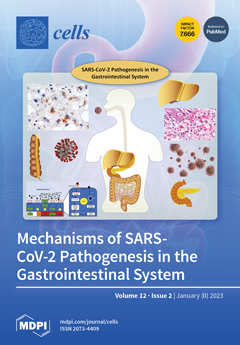Background: Fibroblast-like synoviocytes (FLSs) are essential mediators in the expansive growth and invasiveness of rheumatoid synovitis, and patients with a fibroblastic-rich pauci-immune pathotype respond poorly to currently approved antirheumatic drugs. Galectin-9 (Gal-9) has been reported to directly modulate rheumatoid arthritis (RA) FLSs and to hold both pro- and anti-inflammatory properties. The objective of this study was to evaluate clinical and pathogenic aspects of Gal-9 in RA, combining national patient cohorts and cellular models.
Methods: Soluble Gal-9 was measured in plasma from patients with newly diagnosed, treatment-naïve RA (
n = 98). The disease activity score 28-joint count C-reactive protein (DAS28CRP) and total Sharp score were used to evaluate the disease course serially over a two-year period. Plasma and synovial fluid samples were examined for soluble Gal-9 in patients with established RA (
n = 18). A protein array was established to identify Gal-9 binding partners in the extracellular matrix (ECM). Synovial fluid mononuclear cells (SFMCs), harvested from RA patients, were used to obtain synovial-fluid derived FLSs (SF-FLSs) (
n = 7). FLSs from patients suffering from knee Osteoarthritis (OA) were collected from patients when undergoing joint replacement surgery (
n = 5). Monocultures of SF-FLSs (
n = 6) and autologous co-cultures of SF-FLSs and peripheral blood mononuclear cells (PBMCs) were cultured with and without a neutralizing anti-Gal-9 antibody (
n = 7). The mono- and co-cultures were subsequently analyzed by flow cytometry, MTT assay, and ELISA.
Results: Patients with early and established RA had persistently increased plasma levels of Gal-9 compared with healthy controls (HC). The plasma levels of Gal-9 were associated with disease activity and remained unaffected when adding a TNF-inhibitor to their standard treatment. Gal-9 levels were elevated in the synovial fluid of established RA patients with advanced disease, compared with corresponding plasma samples. Gal-9 adhered to fibronectin, laminin and thrombospondin, while not to interstitial collagens in the ECM protein array. In vitro, a neutralizing Gal-9 antibody decreased MCP-1 and IL-6 production from both RA FLSs and OA FLSs. In co-cultures of autologous RA FLSs and PBMCs, the neutralization of Gal-9 also decreased MCP-1 and IL-6 production, without affecting the proportion of inflammatory FLSs.
Conclusions: In RA, pretreatment plasma Gal-9 levels in early RA were increased and correlated with clinical disease activity. Gal-9 levels remained increased despite a significant reduction in the disease activity score in patients with early RA. The in vitro neutralization of Gal-9 decreased both MCP-1 and IL-6 production in an inflammatory subset of RA FLSs. Collectively these findings indicate that the persistent overexpression of Gal-9 in RA may modulate synovial FLS activities and could be involved in the maintenance of subclinical disease activity in RA.
Full article






